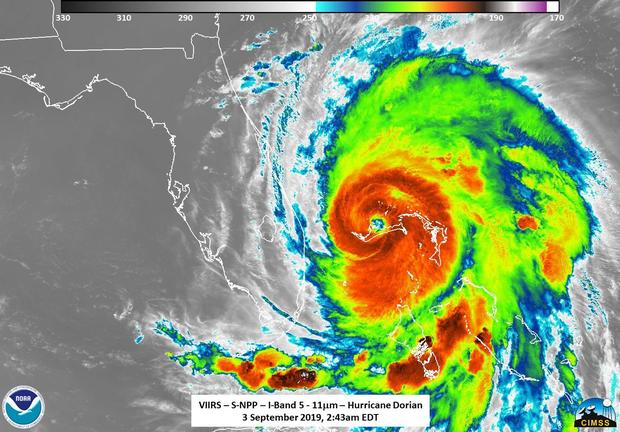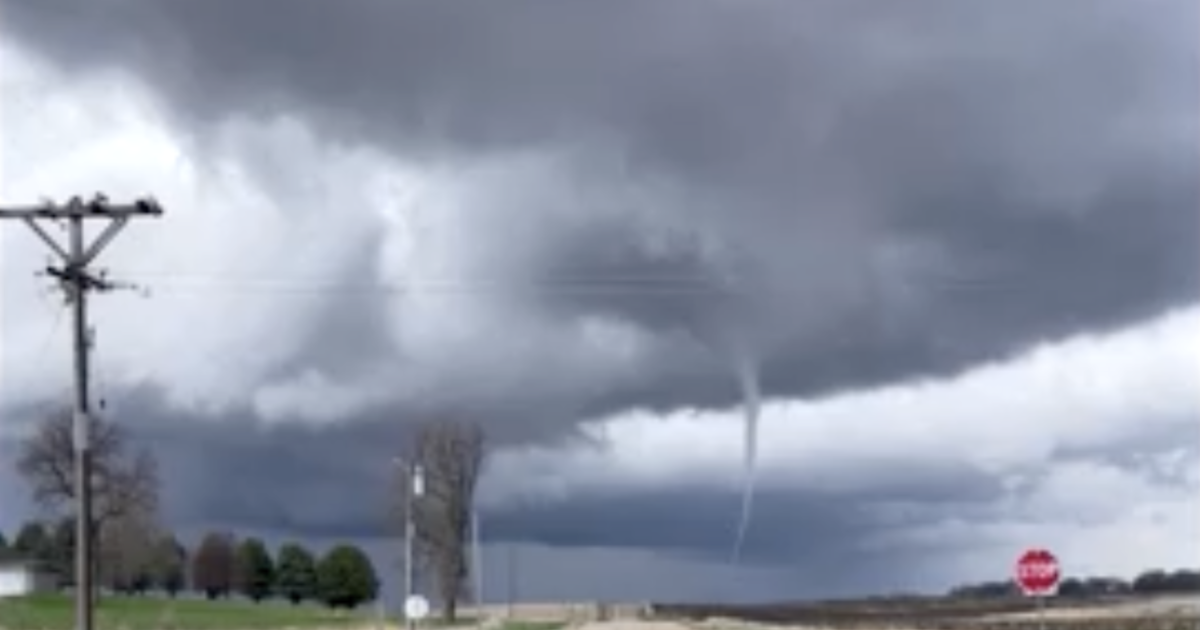Intense hurricanes like Dorian produce 1,000 times more damage – and they're becoming more common
With peak winds of 185 mph, Hurricane Dorian is now tied for the second strongest hurricane on record in the Atlantic basin, in terms of wind speed. Pictures from the Bahamas reveal the scale of devastation, consistent with the catastrophic damage expected in a Category 5 hurricane.
Naturally we expect that a stronger storm produces more damage. But the damage does not go up in a linear fashion as the winds increase. Instead, the growth is exponential.
At peak intensity, Hurricane Dorian's winds clocked in at 185 mph, about two and a half times faster than the 75 mph winds of a low-end Category 1 hurricane. Yet the potential damage caused by a storm like Dorian is not 2.5 times more, or even 25 times more — it's more than 1,000 times greater. That's because the damage increases by the eighth power, according to research by Nobel Prize-winning economist William D. Nordhaus.
So, a storm with winds of 150 mph can be expected to produce not double but approximately 256 times the damage of a storm with winds of 75 mph. For a storm like Dorian, with winds of 185 mph, the damage potential — resulting from a combination of winds, storm surge, rain and tornadoes — increases by 1,371 times.
That would explain why the strongest of hurricanes — Category 3, 4 and 5 storms — produce 85% of all hurricane damage, even though they only make up one-quarter of landfalling storms.
Unfortunately, evidence shows that as the Earth warms due to human-caused climate change, the frequency of the most catastrophic hurricanes has been increasing in recent years.
A 2013 study found a "substantial and observable" increase in the proportion of Category 4 and 5 storms since 1975 — about a 25% to 30% increase per one degree Celsius (1.8 degrees Fahrenheit) of global warming.
Over the past 169 years of record-keeping there have been only 35 Category 5 hurricanes in the Atlantic basin. Given this statistic, ignoring any trends or cycles, that means in any given year there is only a 20 percent chance of a Category 5 hurricane. (It should be noted that before satellites began tracking hurricanes in the 1960s the statistics are less reliable and thus some storms may have been missed.)
Yet in the past four years there have been five Category 5 hurricanes in the Atlantic Ocean; Matthew in 2016, Irma and Maria in 2017, Michael in 2018 and Dorian in 2019. Looking at the hurricane record as it stands, the chance of so many Category 5 storms forming in consecutive years is only a small fraction of one percent.
However, there are natural cycles, such as the warm interval of Atlantic Multidecadal Oscillation (AMO), which help explain some of the increase in intense systems. In addition, while climate change did not cause Dorian, the recent upsurge in the most powerful hurricanes lends credibility to the mounting evidence that warming ocean waters due climate change is magnifying destructive storms.
This upward trend in the most powerful storms is expected to continue as the climate progressively warms. In a 2018 study, using a state-of-the-art climate model called HiFLOR, researchers at NOAA's Geophysical Fluid Dynamics Laboratory in Princeton, New Jersey, projected a potential increase in major Atlantic hurricanes (Categories 3 and higher) of nearly 30% by late this century.
Alarmingly, the research team found the future spike is even more dramatic when considering only Category 5 storms. The HiFLOR model projects a 136% surge in the number of Category 5 storms from 2081 to 2100.
Since the most intense hurricanes are responsible for the vast majority of damage, it is apparent that climate change will likely continue to power more destruction in the future.




